その中で、フランスの著名な知識人18人がサインした以下の国際アピールが送れらてきました。このアピール文を草稿したジョーンマーク・ロエール氏は「アルバート・カミュの伝統にしたがって、世界でも最も核武装されている国の一つの既成事実化した野蛮性を拒否する知識人がいまだフランスにいることを知ってもらうために、このアピール文を書きました」と語っています。
また「このアピール文に対して共感していただけたら、どうかあなたの考えや意見をお寄せください」とあります。
ロエール氏の連絡先です:
Jean-Marc Royer, Paris, France
jean-marc_royer@orange.fr
なお翻訳は友人がボランティアでやってくれました。
**********************
国際アピール
ヒロシマ、チェルノブイリ、フクシマ:人道に対する罪
1945年以来、2400回以上の核爆発があった。そのいくつかのケース(1)における威力は、広島型爆弾の数千個分に達していた。そしてもちろん、無数の「故障」や数十回もの惨憺たる事故が起きている。分かっている範囲では、その一番古いものは1957年秋のウィンズスケール(英国)およびマヤーク(旧ソ連)での事故だ。それぞれINES基準のレベル5及び6だった。しかしこのすべてが及ぼした影響について厳密に語ることのできる人はいるのだろうか? この問題を国際的なレベルで分析する疫学的研究の名にふさわしい研究は、まったく行われて来ていない。そこで欧州議会の緑の党のメンバーらは、放射線リスクに関する欧州委員会(CERI)がこの影響を調査するよう要請した。その結果、過去65年間に渡って世界中の人々が受けてきた放射能による深刻な影響が確認された。この放射能が南極の氷から微量に検出されているのを知っている我々からすれば、驚くことではない。長期間に渡る低線量汚染がもたらす病理的影響の危険はあまりに巨大なため、全ての政府と国際機関は連携しあってそれを否定している。
チェルノブイリ:放射線照射と「リバウンド」による複数の汚染
ちょうど1945年8月6日がそうであるように、1986年4月26日はすべての人類にとって歴史的な日だ。事故現場からの距離によって異なったが、この惨事の発生直後から放射性物質の放出は暴力的で、複合的で、複雑で、そして長期間続く影響を伴っていた。これがチェルノブイリ事故の異常な点の1つである。爆発した際、チェルノブイリのレーニン原子力発電所4号機からは、燃料の核分裂で生成された希ガスや各種のエアロゾルがある意味では核爆弾と似たように放出されたが、それだけではなく燃料の「固体系のホット・パーティクル」(5)も放出された。これらはありとあらゆるサイズの破片で、他の放射性核種と合わせて原発の敷地内、またはその付近に落下した。それに続けて、液体状のホット・パーティクルが雨の後、土の中で形成された。これらのパーティクルが飲食や呼吸を通して体内に入ると、たとえ放出から長期間が過ぎた後でさえ、高線量の局地的な内部被ばくをもたらす。この所見は事故の余波や影響を理解するために重要である。
事故当日以降、放射線は次第に様々な種類の長期的な汚染へと移行していき、誰一人予想できなかった放射線学的な状況に進展していった。
2つの例がある。
- プルトニウム241の崩壊過程に続いて生成されるアメリシウム241は、強力なガンマ線を放出し、多くの地点で汚染の重要な部分を占めるようになる。徐々に起きたこの崩壊のために、ガンマ放射線のレベルがすでに減少していた地域が再び危険になってしまった。
- さらに生体への蓄積(生物濃縮)、そしていくらかの年月が経った後には植物が根をおろす土壌への移行により、放射性核種の生態系への幅広い再分布が起きた。するとこれらの放射性核種と植物がどんどん接触しやすくなり、放射性核種は植物によって土の表面にふたたび引き出された。これが汚染地域における死亡率と疾病率が拡大及び悪化した原因の1つである。
(ガンと白血病に加えて)チェルノブイリが引き起こした一部の病気
- チェルノブイリによる[人体の]放射能汚染は、内分泌系のすべての臓器の働きに悪影響を及ぼした。胸腺のホルモンに関する機能の崩壊は、免疫系の病理進展の主要な部分を占める。
- 循環器系臓器の病気は「リクビダートル」の障害や死亡の主要因の1つだ。
- チェルノブイリ大惨事により引き起こされた老化の加速が、数十万人に悪影響を及ぼしたし、将来も数百万人に悪影響を及ぼすだろう。
- 鉛中毒はチェルノブイリに関連する重要な病理の1つとなった。これは消火作業の最中に2400~6720トンの鉛が敷地内に廃棄されたことによる。鉛の主要な部分が、原子炉の火事の中で溶融、沸騰、昇華し、大気中に放出された。
さらに、チェルノブイリ大事故による遺伝的な影響が何世紀にも渡って、何億人の人々に対して続く。将来の犠牲者に含まれるのは以下の人々である。
- 最初の放射線の衝撃(強力で破壊的な外部被ばく)を経験した人々。生態圏に放出された放射性核種の量は大変重要であるためである。
- ストロンチウム90とセシウム137により汚染された地域で現在、そしてこれからの300年間を生きる人々。 もしくはプルトニウムとアメリシウムにより汚染された地域でこれからの数千年を生きる人々。
-被ばくした両親(その後住んでいる場所とは無関係)から生まれた子どもたちとその後の多くの世代。
隠蔽、公的なデータ改ざん、背任行為
チェルノブイリから放出された全放射性核種によって欧州諸国がどの程度まで汚染されたのかに関し、公的に入手可能なデータは存在しないし、今後とも出てこないであろうことは今や明白である。IAEAおよびWHOは、このデータの欠落を2005年の「チェルノブイリ・フォーラム」における言い訳に用いた。彼らの研究対象の範囲は、ベラルーシ、ウクライナ、およびロシアにかかわるデータのみに限定され、他の欧州諸国の汚染は無視された。
しかし、たとえある地域における汚染の通常の密度が高くなかったとしても、事故直後の数日間及び数週間の後に大規模な汚染が起きたことは事実である。放射性物質の降下量は自然バックグラウンドレベルの1万倍を超えていたということが、一連の出来事を再構築することによって判明している。このことが、低レベルであっても長期間(数十年)に渡って汚染が続くことと合わせ、住民の健康と環境に対して大きな影響を与えるのは必至である。
もう一方、チェルノブイリの病理的影響について監視する機関が排除されたり、事故が引き起こした問題を研究するリサーチ班が分裂させられたり、専門知識を持つ医師たちがハラスメントを受けたり投獄されたりした。それらは真実を抑圧しようとする一斉かつ執拗な企てだった(6)。
それに続けてIAEAとWHOの専門家たちが提示した、ある特定の健康問題とチェルノブイリの放射線との関連を明白に提示するための必要条件は、ある実際の人物の総放射線被ばく量(その正確な再構成は相応の理由から不可能である)とその人物の健康被害との間に、「確実な相関性」が確立されなければならないというものであった。これはきわめて不誠実な類の知的詐欺行為である。
これらの背任行為に加え、旧ソ連、ウクライナ、ベラルーシ、そして関連する主要な国際団体(IAEA、WHOなど)の中では、チェルノブイリ事故の影響を過小評価する政策がとられた豊富な証拠がある。以下がそのいくつかの例だ。
‐「清掃」業務に参加した数十万人の兵士らの健康に関するブックレットの中には、当時の被曝限度25レントゲンを超過していたことに関する記述がまったくない。しかし軍の清掃人1100人の臨床診察の結果、37%の人に放射線による血液学的症状があった。これらの人々が25レントゲン以上浴びていたという明白なしるしである。
-チェルノブイリによる白内障の頻発について、医学界は発見から8-9年経過した後にになってようやく認め始めた。
-甲状腺がん、白血病、中枢神経の疾患に関しても同じ状況である。
チェルノブイリによる公衆の健康への影響
CERIの報告書で出版されたデータを要約すると、チェルノブイリによる放射能汚染は約4億人(欧州で2億500万人、欧州外で約2億人)に悪影響を及ぼした。旧ソ連の汚染地域に暮らす子供たちの間の一般死亡率の統計は特に痛ましい。健康な子どもはわずか20%なのである。ポーランドの一部の地域では、健康な子どもはもはやいない。ドイツで事故後に生まれた子どもたちの歯には10倍以上のストロンチウム90が含まれていた(同様に、ウィンズスケールのそばに住む英国人の赤ちゃんの歯からはプルトニウムが出てくる。そのもう1つの原子力事故から53年経った今、ウィンズスケールはセラフィールドに改名されている)。チェルノブイリの犠牲者数は数世代に渡って増え続けるだろう。事故直後の最初の15年間については次のように推測される。
ベラルーシ、ウクライナ、ロシア 237,000人
欧州の残りの地域 425,000人
アジア、アフリカ、北米 323,000人
世界全体 985,000人(7)
チェルノブイリ:人類の時代における核の大惨事(8)
以下の特徴により、原子力事故は生命史における多次元的な破壊と定義される。
-広大な面積に渡って起きる生態系全体への取り返しがつかない損失、鳥たちの鳴かない春、巨大で静かな火に焼き焦がされる木々。
-あまりに非人間的な状況でのあまりに膨大な死者数は、嘆き悲しむことを不可能にする。特に「無感覚の乾いた死が起きる時には」。
- 我々の想像力を超えたところにある予想外で考えられない出来事。それが未来に及ぼす影響は、それ自体が予測不可能。
-被曝した犠牲者たちは、精神的および肉体的な苦しみを味わう。影響の一部は数世代に渡って広がり、奇形の子どもたちが生まれてくる。
別の言い方をすれば、もう戻ってくることは不可能な「ビフォー&アフター」だ。人間の象徴的な記憶、その無意識の中に開けられた穴は、「抑圧された者たちの帰還」をその出来事の大きさに見合って準備しようとする。しかしこれに加え、終わりもなければ予測可能な期間も存在しない。これが原子力の事故の「二重のパラドックス的効果」だ。それは大きくなりながら人類を内側から滅ぼしてくる怪物であり、執拗な死亡率上昇を避けることはできない。原子力事故は「未来を侵略し、破滅から免れる可能性を与えない。その賭けを受けて立つ用意のできている文化は存在しない」(10)。
人類の近代産業時代における否定主義とその影響
国連加盟諸国と国際機関はチェルノブイリによる健康への影響を故意に過小評価してきた。その中にはUNSCEARも含まれる。バイアスのかかった判断はWHO(11)にも見られる。2005年までの死者数は約30人に過ぎないというのが、その悪名高き理論だった。
しかし実際ははるかにひどい。これは1945年8月6日以降の出来事に関係している。日本の不名誉な敗北の顔として、「ヒバクシャ」たちはあたかも疫病運搬人であるかのように扱われ、感染するかのように妄想され、恐れられた。公的に辱められる対象とされたことで、生き残った人々のほとんどは証言を行って「記憶の仕事」に貢献することを一切思い留まった。欧州の戦後思想における「記憶の仕事」は極めて重要性を持つ遺産である。それは、プリモ・レーヴィ、ロベール・アンテルム、ダヴィド・ルセ、シャルロット・デルボ、エリー・ヴィーゼル、ホルヘ・センプルン、ジャン・アメリーなどのホロコーストを生き残った人々にみられる。日本の官僚たちは街の速やかな「復興」に進んだ。敗北の痕跡とこの惨絶な犯罪の痕跡のすべてを、注意深く消すことが目的だった。ナチス・ドイツによるショアーの場合に起きたこととは対照的に、勝者と敗者は人類を盲目にさせるべく連携した。広島と長崎で行われた犯罪の性質を隠蔽するというその狙いは、今のところ成功している。例として、日本側当局の助力を得た米軍は原爆投下の影響についての現地調査を行った。これらの研究は米国政府の秘密書庫に保管され、長い間アクセス不能のままになっていた。これは苦しんでいた犠牲者たちに対して侮辱的であるということも事実だが、何よりこれらの保管資料こそが、現在、低線量放射線が長期間に渡ってもたらす影響を各国政府および国際機関が否定する際の根拠になっているのだ!
すべての痕跡を消せ、それこそがすべての犯罪者とホロコースト否定論者に共通する信条だ(これについてギュンター・アンダースがより専門的に語っているのを参照のこと)。同じ政策がチェルノブイリでも取られた。フクシマでも同様になると予想される。我々は、未来の世代に危険を譲り渡そうとしているのはよくよく承知の上で放射性廃棄物を扉の向こうに封じ込めようとするが、それと同じ方法で「記憶の仕事」も排除されるのだ。
これらすべての危険に直面しつつとられている否定主義の政策だが、そのもう一つの要素は、危険をただの統計学的なリスク曲線に替えてしまうという思考だ。このように危険を知的操作することで隠蔽されるのは、事故が起きた際に(「残余のリスク」というが)救援活動に呼ばれるのは常に政府だという事実である。なぜなら民間資金ではもちろん状況に対処するには不十分であるからだ。しかしチェルノブイリとフクシマ以来、世界のすべての国々の住民が知っているに違いないことがある。原子力事故の後ならもちろんのこと、原子力事故の前にも、効果的な住民の保護に関しては政府になどもはや頼れないということだ。世界中の人々は政治的選択から排除された-原子力の問題について意見を求められた市民社会は、これまでに1つとしてない-彼らに食物を与えてくれる土地から排除されるリスクを背負っている。「彼ら自身の生活から排除される」のだ。
チェルノブイリ事故はもっと深刻になりえた
事故の原因となったのは「フルスケールの現実」を実験することを目的とした異常なプロジェクトだった。その発想とは、非常停止時に発電機のタービン軸に残った運動エネルギーを使ってさらに発電しようというものだった!言い替えるなら、この生きた世界が(ずっと前からだが)科学技術のための大規模な研究室と化したのだ。しかし、第4原子炉ひとつから放出された物質は、広島と長崎に落とされた爆弾を10倍以上も上回る汚染を引き起こした。そして「チェルノブイリの雲」は地球を少なくとも2周し、チェルノブイリは人類の時代における過去最大の科学技術事故になった。
しかしそれ以上に深刻な事実がまだある。事故後の処理作業を直接監視した核物理学者ヴァッシーリ・ネステレンコ教授はこう説明する。仮に1400kg(14)のウランと黒鉛の混合物が水に接触すれば、広島での爆発の200倍である3~5メガトン級の核爆発を引き起こしうる致命的な量となる。もし、その時すでに圧力容器を貫通していた炉心溶融物が、原子炉地下に格納された大量の水を遮断しているコンクリートの厚壁をも貫通していれば、これが起こり得た。「そのようなパワーの爆発は300-320km圏内(ミンスクの街も含む)の住民に強力な放射線障害を引き起こしうる。そして欧州全体が深刻な放射能汚染の犠牲となり、通常の生活が不可能になりうる」。私の意見では、チェルノブイリはもう少しのところで核爆発になるところだった。もしそうなっていれば、欧州には人が住めなくなっていただろう。(15)]
チェルノブイリの再現、フクシマ
日本の場合、状況を考慮すると、冷却系が再び稼働することは決してありえないことは明白だ。建屋の空気を不活性にするためのホウ酸水が窒素と共に注入されている間、冷却用の大量の水が毎日送り込まれている。炉心溶融物が格納容器を貫通して、やはり大量の水に接触することのないようにしているのである。これが起きれば大惨事となる。 そして影響を受けた原子炉の数は1つではなく4つだったし、うち3号炉はフランスが提供したMOX燃料で稼働していた(16)。原発の位置からして、余震による影響が起きる可能性も残念ながら排除することはできない。これらの条件の下で、日本だろうとどこだろうと、このタイプの状況が与える累積的影響を誰が予想できるだろうか?チェルノブイリで地球規模の惨事を回避するのに成功した方法は、他の場所では二度と実現不可能である。例外はしばらくの間、中国にあるだけであろう。旧ソ連では80万人の「リクビダートル」を雇うことが出来た。その他には、その広大な国の全土から集められた緊急部隊、数百人の消防士たち、1万人の鉱夫たち、何万という予備兵を含むいまだ強力だった軍隊、このすべての人々が単純に政治局書記の命令で動いた。このような巨大な人数の派遣はもはや他の類似したケースでは不可能だ。そして他国への要請もそれで間に合うかどうかは疑わしい。命を犠牲にし、過酷と分かっている痛みを経験してもよいというボランティアの数は、リベラルな民主主義では少ないだろう。
汚染地域で生きていかなければならないという可能性は排除できない
チェルノブイリのフォールアウト(放射性降下物質)で汚染された地域では、農業を営む、森を散歩する、釣りや狩りに行く、放射線量を確認せずに地元で作られた野菜を食べる、牛乳そして水ですら飲む、これらはすべて危険だ。最も安全で最も精密な生命の源として数千年もずっとそこにあったもの-空気、天然の水、花々、大地の実り、森、川、そして海-これらがたった数日で人と動物に対する危険源になってしまった。このウクライナの惨事が我々に教えてくれたように、我々は呼吸によるものにせよ食物を通した摂取にせよ「低線量」がもたらす破壊的な健康への影響をもまた考慮しなければならない。これらは何年も経ってからその影響が出てくるのである。
ベラルーシで使われているSCRINNERなどの人体の自動分光測定機器は、人体における放射性核種の活性度を計測するように設計されている。これらの機器は運転中の原子力発電所の風下に位置しているすべての国々で定期的に使われるべきである。さらに、ヨウ素剤や屋内避難手段、ファーストエイド(応急処置)、避難区域、緊急計画の利点や限界点が明確に書いてある、ほんとうに大規模な公衆向けの処方箋が発行されるべきだ。全ての国の市民社会の団体が、公的なシステムからは独立した放射線管理システムの創設の重要性を考慮すべき理由はここにある。
極端に矮小化された悪-原子力産業
その「矮小化された悪」のコンセプトにおいて、ハンナ・アーレントは1960年代、人類に対する罪は一般の人々によって犯されることを示した。なぜなら人々はその「活動」の目的に対して何の疑問も投げかけないからだ。一度彼らがその階層制度(またはあるイデオロギー。現在となってはそのすべてが、「仕事」などの領域の世界を支配している計算づくの理由から、普遍的価値を有している)に対しての忠誠の誓いでくくりつけられると、彼らはこれらの活動を正しいとみなすのだ。この「悪の矮小化」のコンセプトは「人間性」に関する推測から分岐したものではなく、まさに1933年から1945年にかけて欧州で起きた出来事、そして何がそれらの出来事の道筋を作ったのかに関する社会学的・歴史学的分析に基づいているものである。60年後の我々は、進化を阻まれた世界を信じているのでない限り、ハンナ・アーレントが書いたことから結論をあえて導き出さなければなるまい。歴史的に、世界における悪の矮小化は、労働と人間が科学と技術による固い支援を得ていったん「産業化」されるやいなや、広範に広がっていった。言い換えれば、大切に育ててくれた地球に基盤をおく現実から隔離され、バラックにおしこめられてプロレタリアートにされ、資格を奪われ、現実を剥奪され、そして究極的には非人間化されたということである。その瞬間から、すべては矮小化の目的のために可能となり、すべては悪の目的のために許容可能になった。消費主義的で市場を基盤とした独占形態の利益のためだけに、人間のすべての目的が価値を失った。
それ以来、何も改善されていない。これは人間の精神を含めすべてのレベルで証明できる。だから我々は勇気を持って言わなければならない。この悪の矮小化が普及したのに続いて我々の社会は「民主的全体主義システム」以外の何物でもなくなってしまい、複数の究極的大惨事が導かれた。それは政治の領域の中でもそのように分析されるべきである。地球上すべての生き物を一斉に死に追いやる能力をもつ核産業は、特に顕著な例である。しかし、西側世界の各国政府は、ほとんどのメディアと共に、1945年8月6日と9日に起きた人類の歴史的敗北を隠蔽するために手を尽した(40年続いた冷戦がそれに大きく寄与した)。それには、研究・科学・技術・産業の持つ華々しい発想や力に対するゆるぎない賞賛と献身が伴っていた。1945年8月6日、新しい神が出現した。すべての神がそうであるように、恐ろしい力を引き起こしながら。そしてその栄光のために新しい賛美の歌がすぐに作られた。原子爆弾投下と「チェルノブイリの経験」は人類に対する犯罪であるだけではない。それは何か新しいものでもあった。「自然」に対する犯罪である。こんにち我々が「エコサイド」と呼ぶものだ。このような生態系への組織的な大惨事という意識が抑圧され続ければ、人類の未来や歴史の書かれ方へ影響を及ぼさずにはいないだろう。このすべてのことから要請され導き出される結論は、1945年8月6日以降、チェルノブイリやその他の場所、それからファルージャ、フクシマに至るまで起きてきた人道に対する原子力犯罪を裁くために、バートランド・ラッセルが創設したのに似た国際法廷を設立する必要があるということだ。
Notes:
注(訳省略)
1 - 100 Mt: Andrei Sakharov, Mémoires, Seuil, 1990, p 246. The French IRSN claims it was about 50 Mt.
2 - European Committee on Radiation Risk (CERR), Recommandations 2003 du CERI, Ed Frison Roche, 2004. Summary and viewing of the report on: www.euradcom.org. For the CERR, an estimated 65 million deaths are attributable to the nuclear industry since 1945!
3 - Claude Lorius, Voyage dans l’Anthropocène, Actes Sud, 2010.
4 - The vast majority of information that follows is from the book by Alexei V. Yablokov, Vasily B. Nesterenko, Aleksei V. Nesterenko, Chernobyl, the Consequences of the Disaster for Man and Nature No. 1181, Annals of the Academy of Sciences New York, 2009. The selection of texts translated into French is from Wladimir Tchertkoff in collaboration with Lisa Mouravieff. The American version is in part searchable online at: http://books.google.fr/. Other sites offer summaries in French.
5 - At the time of the accident, the activity of certain "hot particles" reached 10 to 12,000 Becquerels, which could cause death within few hours.
6 - Yuri Bandazhevsky was arrested in July 1999, allegedly as part of emergency measures to combat terrorism. Arbitrarily detained and accused of corruption, sentenced on 18 June 2001 to eight years in prison, despite the public recantation of his accuser, after a trial worthy of the thirties, he was imprisoned until 2005. Nesterenko, director of the independent Belarusian Institute of Radiation Protection, Belrad, which he founded in 1989 with the help of Andrei Sakharov, Ales Adamovich and Anatoly Karpov, was threatened with internment in a mental asylum by the KGB, suffered two attacks, and died August 25, 2008 after surgery to the stomach.
7 - Alexei V. Yablokov, Vasily B. Nesterenko, Aleksei V. Nesterenko, op. cit. These figures have been widely reviewed upward either by the NY Academy of Sciences, or following the international conference in November 2010: see "La gazette nucléaire" No. 259 February 2011, on http://resosol.org/Gazette/2011/259p23.html
8 - Age characterized by the fact that man has become the main geological force on earth (Georgescu-Roegen, P. Crutzen, A. Gras, J. Grinevald or C. Lorius).
9 - Allouch Jean, Erotique du deuil au temps de la mort sèche, EPEL, 1995
10 - Frederic Lemarchand, sociologist, member of the Scientific Board of CRIIGEN, article dated March 17, 2011, Les Echos.
11 - An agreement was signed in 1959 between the IAEA and WHO forcing the latter to submit its position to that of IAEA in all cases where nuclear power is at stake.
12 - The city was quickly rebuilt, which is entirely understandable and it was also the case in Europe. But one would have hoped that other traces of the disaster remain, and not just the dome of the industrial exhibition palace.
13 - In the movie «Tchernobyl; la vie contaminée, vivre avec Tchernobyl » by David Desramé and Dominique Maestrali.
14 - In 2011, there are still the equivalent of some tens of tons of uranium in the sarcophagus...
15 - Letter from Mr. Prof. Nesterenko to Wladimir Tchertkoff, Solange Fernex and Bella Belbéoch, Jan. 2005.
16 - Fuel consisting of a mixture of uranium oxides, but also of plutonium, which on the one hand reduces the safety margins (its melting temperature being lower and more quickly reached) and on the other hand increases its dangerousness, a few milligrams being sufficient to cause a rapid death.
17 - Melman Charles, Lebrun Jean-Pierre, La nouvelle économie psychique, une nouvelle façon de penser et de jouir aujourd’hui, Eres, 2009.
This call was signed by:賛同者(訳省略)
Paul ARIES, philosopher and writer, key intellectual for the movement in support of economic decrease. Last book published: « La simplicité volontaire contre le mythe de l'abondance »
Marc ATTEIA, Doctor of Applied Mathematics, Professor Emeritus at the University of Toulouse, author of: Hilbertian kernels and spline functions, Elsevier
Science Publishers, 1992 and Le technoscientisme, le totalitarisme contemporain,, Yves Michel, 2009.
Marie-Christine GAMBERINI, translator, referent of the association Les Amis de la Terre France on nuclear questions and energy.
Raphaël GRANVAUD writes in "Billets d'Afrique" of the association Survie, author of Que fait l'armée française en Afrique, Agone 2009, and Areva en Afrique, une face cachée du nucléaire français, Agone 2012.
Alain GRAS, professor emeritus at the University of Paris I and Director of the Centre d'études des techniques, des connaissances et des pratiques, co-founder of the journal Entropia, author of Le choix du feu. Aux origines de la crise climatique, Fayard, 2007.
Francis JARRIGE, Senior Lecturer at the University of Burgundy, author of Face au monstre mécanique. Une histoire des résistances à la technique, imho, Paris, 2009.
Eva JOLY, former magistrate of the pôle financier de Paris, former adviser to the Norwegian government then to the Icelandic Government in the struggle against international financial crime, Member of European Parliament.
Baudouin JURDANT, Professor Emeritus at the University of Paris 7, translator of Paul Feyerabend, author of Les problèmes théoriques de la vulgarisation scientifique, Ed. Les Archives contemporaines, 2009.
Paul LANNOYE, PhD in Physical Sciences, honorary MEP, director responsible for the thinktank Groupe de réflexion et d'action pour une politique écologique (GRAPE) )in Belgium, co-translator into French of the report CERI, Editions Frison-Roche.
Serge LATOUCHE, Professor Emeritus of Economics, University Paris XI and growth objector, author of Vers une société d'abondance frugale ; Contresens et controverses sur la décroissance, Mille Et Une Nuits/Fayard, 2011.
Frederick LEMARCHAND, sociologist, co-director of the pole RISK, University of Caen, Council Member of the scientific Council CRIIGEN. Co-author of Les Silences de Tchernobyl and of the film La Vie Contaminée, advisor for the International Exhibition Once upon a time Chernobyl.
Corinne LEPAGE, former Minister of Environment, MEP, a teacher at the IEP. Last book: La vérité sur le nucléaire ; le choix interdit, Albin Michel, 2011.
Stephane LHOMME, Chairman of the Observatoire du Nucléaire, author of L’insécurité nucléaire ; bientôt un Tchernobyl en France, Yves Michel, 2006.
Jean-Marie MATAGNE, Ph.D in Philosophy, President of l’Action des Citoyens pour le Désarmement Nucléaire (Www.acdn.net), author of En finir avec la terreur nucléaire, and of Désarmer pour vivre sur une planète sans armes ni centrales nucléaires.
Roland MERIEUX, secretary of the International Union for assistance to the liquidators of the Chernobyl nuclear power plant and nuclear victims.
Jean-Marie PELT, President of the European Institute and Honorary Professor of Ecology at the University of Metz, latest book: Heureux les Simples, Flammarion, 2011.
Pierre RABHI, farmer, Algerian-born French writer and thinker, Knight of the ordre national de la Légion d'Honneur, Pierre Rabhi is among the pioneers in agroecology.
Jacques TESTART, agronomist and biologist, PhD in Science, Honorary Director of Research at INSERM, former president ofthe French Commission on Sustainable Development (1999 -2003). Co-author of Labo-planète. Ou comment 2030 se prépare sans les citoyens, Mille et une nuits, 2011.
Jean-Marc ROYER, engineer, former senior ADP, former leader of the union executive SICTAM / CGT of the airport of Orly, in press: La science creuset de l’inhumanité. Décoloniser l’imaginaire occidental. I, Writer of the Appeal. Email: jean-marc_royer@orange.fr
___________________________
以下原文:
INTERNATIONAL APPEAL
HIROSHIMA, CHERNOBYL, FUKUSHIMA: CRIMES AGAINST HUMANITY
Since 1945, there have been more than 2,400 explosions, with a power in some cases (1) amounting to several thousand times that of the Hiroshima bomb: this comes in addition to numerous "failures" and dozens of catastrophic accidents, starting, as far as we know, back in the fall of 1957 at Windscale (UK) and Mayak (former USSR), respectively ranked level 5 and 6 on the INES scale. But who can tell precisely what the impact of all this has been? Since no epidemiological survey worthy of the name had been initiated at an international level to analyze this problem, thus a European Committee on the Risks of Irradiation (CERI) (2) was requested by green party Members of the European Parliament to study this impact, and their findings confirmed the serious effects that atomic activity has had during the past 65 years on populations worldwide, which comes as no surprise when we know that traces of this activity have been detected in the ices of the South Pole (3). The stakes are so huge that the pathological effects of the contaminations by the small doses throughout time are fiercely denied jointly by all countries or international organizations.
Chernobyl: irradiation and multiple contamination with "rebounds"
The April 26 1986 is a historical date for all of humanity, just as the august 6 1945 (4). Right from the start of this disaster, depending on the distance of the accident, the emission of radiations was violent, multiple, complex and with long-lasting effects: this is one of the peculiarities of the Chernobyl accident.
When it exploded, the reactor N° 4 of the Lenin plant at Chernobyl not only rejected gases and various aerosols produced by the nuclear disintegration of the fuel, in a way similar to a bomb, but it also rejected "solid hot particles" (5) of fuel: these are fragments of all sizes which, combined with other radionuclides, dropped on the site or near the plant. Subsequently, the hot liquid particles were also formed in the soil after the rains. When these particles enter the body through ingested water and food or inhaled air, they produce, even long after their emission, high doses of localized internal irradiation. This observation is important for understanding the aftermath and the consequences of the accident.
Since the day of the disaster, irradiation has gradually given way to various types of long-term contamination and the radiological situation is developing in a manner that no one could predict. Two examples:
- Following the decay process of plutonium 241, the natural formation of americium 241, a potent gamma ray emitter, becomes an important part of the contamination of many places. Because of this gradual disintegration, areas that had reduced their level of gamma radiation have once again become dangerous.
- Furthermore, there was a wide redistribution of radionuclides within ecosystems due to their concentration by living organisms (bio-accumulation) and their migration, after some years, in parts of the soil where the roots enter: these radionuclides then became increasingly accessible to plants, which draw them for a second time to the soil surface. This is one of the causes of the expansion and worsening of morbidity and mortality in contaminated areas.
Some of the diseases caused by Chernobyl (in addition to cancer and leukemia)
- The radioactive contamination from Chernobyl has affected the functioning of every organ of the endocrine system. The collapse of the hormonal function of the thymus plays a major part in the development of pathology of the immune system.
- The diseases of circulatory organs are one of the leading causes of disability and death among the "liquidators ".
- The accelerated aging caused by the Chernobyl disaster has affected hundreds of thousands of people and will affect millions in the future.
- Lead poisoning has become one of the significant pathologies linked to Chernobyl. This is due to the fact that between 2400 and 6720 tons of lead were dumped on the site during extinction operations. An important part of that lead was released into the atmosphere following its melting, boiling and sublimation in the reactor fire.
In addition, genetic effects caused by the Chernobyl disaster will affect hundreds of millions of people for centuries. Among these future victims:
- those who experienced the first radiological shock (the powerful and brutal external irradiation), because the amount of radionuclides released into the ecosphere was very important;
- those who now live, and those who will live over the next 300 years, in the areas contaminated with strontium 90 and cesium 137, or those who will live in areas contaminated with plutonium and americium over the next thousands of years;
- for many generations, children born of parents who were irradiated, wherever they live thereafter.
Secrecy, official falsification of data and the malpractices
There is no publicly available instrumented data on the extent to which all European countries have been contaminated by the entire array of radionuclides from Chernobyl, and it is now clear that there never will be. In using this absence of data as a justification in the "Chernobyl Forum" of 2005, the IAEA and the WHO restricted the scope of its study to include only data pertaining to the territories of Belarus, Ukraine and European Russia, ignoring the contamination of other European countries.
However, even if the usual density of the contamination is not high in a given area, it is a fact that a huge contamination occurred during the first days and weeks following the disaster: we know, by reconstructing the chain of events, that in some areas, the activity of radioactive elements fallout exceeded 10,000 times the natural background levels; this, combined with the low-level but long-lasting contamination (several decades) is bound to have a major impact on the health of residents and the environment.
On the other hand, the removal of institutions which were entrusted with monitoring the pathological consequences of Chernobyl, the diversion of research teams from the study of problems caused by the disaster, the harassment and the imprisonment of some specialized doctors, are as many attempts for concerted and persistent suppression of the truth (6).
Consequently, the requirement put forward by experts of the IAEA and the WHO, for clearly demonstrating that a particular health problem is linked to radiation from Chernobyl, that a "definite correlation " should be established between the total radioactive exposure of a concrete person (never reconstituted with precision, and for good reason) and damage to this person's health, is an intellectual trickery of a particularly dishonest kind.
In addition to these malpractices, in the former USSR, in Ukraine, in Belarus, and in key relevant international organizations (IAEA, WHO ...) there is abundant evidence of a policy to minimize the consequences of the Chernobyl disaster. Here are some examples.
- In none of the health booklets of the tens of thousands of service members who participated in the work of "liquidation» was any mention ever recorded about exceeding the limit of 25 roentgens then in effect. But the clinical examination of 1100 military liquidators found in 37% of them hematological symptoms of radiation sickness, a clear indication that these people received more than 25 roentgens.
- The Official medical science has just begun to recognize the frequency of the cataract of Chernobyl, 8 or 9 years after its discovery.
- Same situation concerning thyroid cancer, leukemia and ailments of the central nervous system.
The consequences of Chernobyl on public health
Briefly summarizing the data published in the CERR report, radioactive contamination from Chernobyl has affected nearly 400 million people, (205 million in Europe and about 200 million outside Europe). The curve analysis of general morbidity among children living in contaminated areas of the former USSR is particularly distressing: only 20% of them are healthy. In some parts of Polesye there are no more healthy children. In Germany, the teeth of children born after the disaster contained 10 times more strontium 90 (similarly, plutonium shows up in baby teeth of English children living near Windscale - since then renamed Sellafield - 53 years after that other atomic disaster). The number of Chernobyl victims will continue to grow over several generations. During the first 15 years following the disaster, it can be estimated as follows:
Belarus, Ukraine, European Russia 237,000
Rest of Europe 425,000
Asia, Africa, North America 323,000
World 985,000 (7)
Chernobyl: a nuclear disaster in the Anthropocene era (8)
The atomic disasters have this characteristic that they always define a multidimensional fracture in the history of life:
- Irretrievable loss of an entire living world covering vast territories, springtime without the cries of birds, and trees scorched by a huge and quiet fire.
- Fatalities in such great numbers, and in such inhumane conditions, that grieving is impossible to achieve, especially "at time of dry death" (9).
- An unexpected and inconceivable event, which lies beyond our faculties of imagination and whose future consequences are themselves unpredictable.
- Irradiated / contaminated victims affected by mental as well as physical suffering, because some effects will spread over several generations, will give birth to lines of deformed creatures.
In other words, "a before and after" with no possible return. A hole in the symbolic memory of humans, in their unconscious, which prepares "a return of the repressed" in line with the size of the event. But in addition to this, and this is the "double paradoxical effect" of atomic disasters, they have no end, no predictable term: it is a monster that grows and devours humanity from within, with a persistent morbidity that is hard to avoid. The atomic disaster "colonizes the future and offers no possibility to escape the doom: no culture is ready to take that bet" (10).
The negationism and its consequences in the Anthropocene era
The UN member states and international organizations, among which the UNSCEAR, have deliberately played down the health consequences of Chernobyl: that bias in judgments is also true for the WHO (11) with its infamous thesis that there were only about thirty fatalities until 2005. But there is a lot worse relating to the aftermath of August 6 1945.
Faces of the disgraceful defeat of Japan, the "Hibakushas" were treated as if they were plague carriers for fear of fantasized contagion; they were subjected to public shame, thus discouraging most survivors from contributing with their testimonies to any "work of memory": the kind of legacy which proved to be of such a critical importance in Europe's postwar intellectual life, as seen with Primo Levi, Robert Antelme, David Rousset, Charlotte Delbo, Elie Wiesel, Jorge Semprun, Jean Amery and other survivors. The Japanese aediles proceeded to a rapid "reconstruction" of the city that was intended to carefully delete all traces of their defeat and ... of this appalling crime (12). Contrary to what happened in the case of the Shoah perpetrated by Nazi Germany, winners and losers teamed up to blind humanity, in order to cover up, so far successfully, the nature of the crimes committed in Hiroshima and Nagasaki. As an example: with the help of the Japanese authorities, US military services had conducted on-site studies of the consequences of the bombings, studies that were kept in the secret archives of Washington which remained inaccessible for a long time. Besides the fact that this was contemptuous towards the victims who were suffering, it is these same archives that states and international organizations now rely on to deny the effects of low doses over the long term!
Erase all traces, such is the creed common to all criminals and Holocaust deniers (see what Günter Anders has to say, more specifically, about this). The same policy was followed in Chernobyl and the same can be expected in Fukushima. The "work of memory" is thus precluded in the same way that one attempts to lock up a piece of radioactive waste although we know perfectly well that we are passing the danger on to future generations.
Another aspect of the policy of denial in the face of all these dangers lies in a line of reasoning which transforms the dangers in curves of mere statistical risks. What this intellectual manipulation of risk aims to hide, is the fact that in the case of a disaster (termed "residual risk") it is always the states which are called to the rescue because private funds are obviously insufficient to cope with the situation. But since Chernobyl and Fukushima, residents of all countries of the world must know that they can no longer rely on their governments to protect them effectively, either before or let alone after an atomic disaster. This is why we can say that the people of the entire world, after having been excluded from the political choice - no civil society was ever consulted on the nuclear issue - are under the risk of being excluded from the lands that feed them, "expelled from their own lives".
The Chernobyl disaster could have been even more serious
The disaster had its origin in the outrageous project which aimed to experiment in the "full scale of reality": the idea was, in the case of an emergency stop, to use the residual kinetic energy of the rotor of the generator for further production of electrical energy! In other words, the living world has (and since long ago) become a large scale laboratory for technoscience. But the material ejected by the single reactor N° 4 caused a contamination ten times more extensive than the bombs dropped on Hiroshima and Nagasaki, and the "Chernobyl cloud" circled the Earth, at least twice, making Chernobyl the greatest technological disaster to date in the Anthropocene era.
But there are more serious facts. The professor Vassili Nesterenko, a nuclear physicist who directly supervised operations to deal with the consequences of the disaster, explains (13) that if 1400 kg (14) of the uranium-graphite mixture came in contact with water, this would be a critical mass that could cause an atomic explosion with a power from 3 to 5 megatons, about 200 times the power of the explosion in Hiroshima; this would happen if enough of the corium, which had already pierced the reactor vessel, had pierced the concrete slab that separated it from the masses of water contained in the basement of the reactor. "An explosion of such power could cause massive radiation injury to the population within a 300-320 km radius (encompassing the city of Minsk) and the whole of Europe could be the victim of a severe radioactive contamination making normal life impossible. [...] It is my opinion that in Chernobyl, we narrowly missed a nuclear explosion. If it had occurred, Europe would have become uninhabitable." (15).
Fukushima, a replica of Chernobyl
In Japan, considering their condition, it is clear that the cooling systems will never be able to return to service. While borated water is injected as well as nitrogen, to render inert the atmosphere of the buildings, a huge amount of water is poured every day in order to cool them so as to prevent the corium from piercing the outer containment and reaching these same masses of water, which could be catastrophic. And it is not just one, but four reactors, including the N° 3 that worked on French-provided MOX (16), that are affected. Not to mention the consequences of seismic aftershocks, the possibility of which can unfortunately not be excluded, given the location of the plant. Under these conditions, who can predict the possible cumulative effects of this type of situation, whether in Japan or elsewhere? Actually, the measures that were successfully applied in Chernobyl to avert a catastrophe of planetary scale are unlikely to ever be feasible anywhere else again, except perhaps for some time yet, in China. In the former USSR, it was possible to recruit 800 000 "liquidators", as well as the emergency services of an entire vast country, hundreds of firefighters, ten thousand miners, a still powerful army with tens of thousands of reservists, all of this simply on the order of the Secretary of the Politburo. The deployment of such gigantic means will no longer be possible in other similar cases, and it is doubtful that appealing to other countries would be enough: in liberal democracy, there will be few volunteers to sacrifice their lives and experience a degree of pain that is known to be horrendous.
The prospect of having to survive in contaminated areas cannot be excluded
In the territories that were contaminated by fallout from Chernobyl, it is dangerous to practice farming, dangerous to wander in the forests, dangerous to go fishing and hunting, dangerous to eat locally produced food without checking its level of radioactivity, dangerous to drink milk and even water. All things that had been for many millennia the safest and most accurate sources of life - air, natural waters, the flowers, the fruit of the earth, forests, rivers and seas - all those, in just a few days, became sources of danger to man and animal. As this Ukrainian disaster has taught us, we must also consider the destructive health effects of "low doses", whether inhaled or ingested through food, which will then produce their effects many years later.
Equipment for automated spectrometry of the human body, such as the SCRINNER used in Belarus, are designed to measure the activity of radionuclides in the human body. These devices should be routinely used in all countries situated downwind of active atomic power plants. Moreover, real large scale public prescriptions should be issued, clarifying the advantages and limitations of iodine tablets, of sheltering measures, of first aid gestures, of evacuation perimeters, of the emergency plans ... This is why, in all countries, civil society organizations should consider the importance of creating a system of radiological control that is independent from the official system.
Nuclear industry, a radical trivialization of evil
Through his concept of "trivial evil", Hannah Arendt showed in the sixties that crimes against humanity were committed by ordinary people because they would not ask any questions about the purpose of their "activities". Once they were bound by an oath of loyalty to their hierarchy (or to an ideology, all of which are nowadays construed as universal values by the calculating reason which rules the world of "work" and other areas), they regarded these activities as legitimate.
This concept of "trivialization of evil" is not derived from speculation about a "human nature", but is indeed based on a socio-historical analysis of what happened in Europe between 1933 and 1945 and what paved the way for those events. Sixty years later, unless you believe in a world shielded from evolution, we must dare to draw conclusions from what Hannah Arendt wrote.
Historically, the trivialization of evil in the Western world spread widely once labor and human beings became "industrialized" with the solid support of science and technology: in other words, they were cut off from their nurturing earth-based reality, to be quartered in barracks, proletarianised, disqualified, deprived of their reality and ultimately dehumanized. From that moment, everything became possible in the order of trivialization and everything became acceptable in the order of evil, since all human purposes were discredited for the sole benefit of consumerist and market-based alienation.
Since then, things have not improved: this can be verified at all levels, including the human psyche (17). So we must have the courage to say that this trivialization of evil has become pervasive and, consequently, our societies have become nothing more than "democratic totalitarian systems" leading us to one or several final disasters, which should be analyzed as such in the realm of politics. The nuclear industry, which carries the potential universal death of all living beings on the planet, is a particularly striking example. But governments along with most media in the Western world (the cold war, which lasted forty years, contributed largely to this) did everything to cover the historic defeat of humanity which occurred on the 6th and 9th of August 1945, with a thick blanket of admiration and devotion to the brilliant ideas and the power of research, science, technology, industry ... A new god had emerged on August 6 1945, naturally yielding fearsome power, as do all gods, and new hymns were promptly created for his glory.
The dropping of atomic bombs, and the "Chernobyl experience" were not only a crime against humanity but also something new: a crime against Nature, what we today would call an Ecocide. If the consciousness of such a systemic disaster for the ecosphere continues to be suppressed, it will not be without consequences for the future of humanity and the way history will be written.
All this leads to a necessary conclusion: there is a need for an international tribunal to be set up, similar to the one created by Bertrand Russell, for judging atomic crimes against humanity that occurred at Chernobyl and elsewhere since August 6 1945, all the way to Fukushima, through Fallujah.
Notes:
1 - 100 Mt: Andrei Sakharov, Mémoires, Seuil, 1990, p 246. The French IRSN claims it was about 50 Mt.
2 - European Committee on Radiation Risk (CERR), Recommandations 2003 du CERI, Ed Frison Roche, 2004. Summary and viewing of the report on: www.euradcom.org. For the CERR, an estimated 65 million deaths are attributable to the nuclear industry since 1945!
3 - Claude Lorius, Voyage dans l’Anthropocène, Actes Sud, 2010.
4 - The vast majority of information that follows is from the book by Alexei V. Yablokov, Vasily B. Nesterenko, Aleksei V. Nesterenko, Chernobyl, the Consequences of the Disaster for Man and Nature No. 1181, Annals of the Academy of Sciences New York, 2009. The selection of texts translated into French is from Wladimir Tchertkoff in collaboration with Lisa Mouravieff. The American version is in part searchable online at: http://books.google.fr/. Other sites offer summaries in French.
5 - At the time of the accident, the activity of certain "hot particles" reached 10 to 12,000 Becquerels, which could cause death within few hours.
6 - Yuri Bandazhevsky was arrested in July 1999, allegedly as part of emergency measures to combat terrorism. Arbitrarily detained and accused of corruption, sentenced on 18 June 2001 to eight years in prison, despite the public recantation of his accuser, after a trial worthy of the thirties, he was imprisoned until 2005. Nesterenko, director of the independent Belarusian Institute of Radiation Protection, Belrad, which he founded in 1989 with the help of Andrei Sakharov, Ales Adamovich and Anatoly Karpov, was threatened with internment in a mental asylum by the KGB, suffered two attacks, and died August 25, 2008 after surgery to the stomach.
7 - Alexei V. Yablokov, Vasily B. Nesterenko, Aleksei V. Nesterenko, op. cit. These figures have been widely reviewed upward either by the NY Academy of Sciences, or following the international conference in November 2010: see "La gazette nucléaire" No. 259 February 2011, on http://resosol.org/Gazette/2011/259p23.html
8 - Age characterized by the fact that man has become the main geological force on earth (Georgescu-Roegen, P. Crutzen, A. Gras, J. Grinevald or C. Lorius).
9 - Allouch Jean, Erotique du deuil au temps de la mort sèche, EPEL, 1995
10 - Frederic Lemarchand, sociologist, member of the Scientific Board of CRIIGEN, article dated March 17, 2011, Les Echos.
11 - An agreement was signed in 1959 between the IAEA and WHO forcing the latter to submit its position to that of IAEA in all cases where nuclear power is at stake.
12 - The city was quickly rebuilt, which is entirely understandable and it was also the case in Europe. But one would have hoped that other traces of the disaster remain, and not just the dome of the industrial exhibition palace.
13 - In the movie «Tchernobyl; la vie contaminée, vivre avec Tchernobyl » by David Desramé and Dominique Maestrali.
14 - In 2011, there are still the equivalent of some tens of tons of uranium in the sarcophagus...
15 - Letter from Mr. Prof. Nesterenko to Wladimir Tchertkoff, Solange Fernex and Bella Belbéoch, Jan. 2005.
16 - Fuel consisting of a mixture of uranium oxides, but also of plutonium, which on the one hand reduces the safety margins (its melting temperature being lower and more quickly reached) and on the other hand increases its dangerousness, a few milligrams being sufficient to cause a rapid death.
17 - Melman Charles, Lebrun Jean-Pierre, La nouvelle économie psychique, une nouvelle façon de penser et de jouir aujourd’hui, Eres, 2009.
This call was signed by:
Paul ARIES, philosopher and writer, key intellectual for the movement in support of economic decrease. Last book published: « La simplicité volontaire contre le mythe de l'abondance »
Marc ATTEIA, Doctor of Applied Mathematics, Professor Emeritus at the University of Toulouse, author of: Hilbertian kernels and spline functions, Elsevier
Science Publishers, 1992 and Le technoscientisme, le totalitarisme contemporain,, Yves Michel, 2009.
Marie-Christine GAMBERINI, translator, referent of the association Les Amis de la Terre France on nuclear questions and energy.
Raphaël GRANVAUD writes in "Billets d'Afrique" of the association Survie, author of Que fait l'armée française en Afrique, Agone 2009, and Areva en Afrique, une face cachée du nucléaire français, Agone 2012.
Alain GRAS, professor emeritus at the University of Paris I and Director of the Centre d'études des techniques, des connaissances et des pratiques, co-founder of the journal Entropia, author of Le choix du feu. Aux origines de la crise climatique, Fayard, 2007.
Francis JARRIGE, Senior Lecturer at the University of Burgundy, author of Face au monstre mécanique. Une histoire des résistances à la technique, imho, Paris, 2009.
Eva JOLY, former magistrate of the pôle financier de Paris, former adviser to the Norwegian government then to the Icelandic Government in the struggle against international financial crime, Member of European Parliament.
Baudouin JURDANT, Professor Emeritus at the University of Paris 7, translator of Paul Feyerabend, author of Les problèmes théoriques de la vulgarisation scientifique, Ed. Les Archives contemporaines, 2009.
Paul LANNOYE, PhD in Physical Sciences, honorary MEP, director responsible for the thinktank Groupe de réflexion et d'action pour une politique écologique (GRAPE) )in Belgium, co-translator into French of the report CERI, Editions Frison-Roche.
Serge LATOUCHE, Professor Emeritus of Economics, University Paris XI and growth objector, author of Vers une société d'abondance frugale ; Contresens et controverses sur la décroissance, Mille Et Une Nuits/Fayard, 2011.
Frederick LEMARCHAND, sociologist, co-director of the pole RISK, University of Caen, Council Member of the scientific Council CRIIGEN. Co-author of Les Silences de Tchernobyl and of the film La Vie Contaminée, advisor for the International Exhibition Once upon a time Chernobyl.
Corinne LEPAGE, former Minister of Environment, MEP, a teacher at the IEP. Last book: La vérité sur le nucléaire ; le choix interdit, Albin Michel, 2011.
Stephane LHOMME, Chairman of the Observatoire du Nucléaire, author of L’insécurité nucléaire ; bientôt un Tchernobyl en France, Yves Michel, 2006.
Jean-Marie MATAGNE, Ph.D in Philosophy, President of l’Action des Citoyens pour le Désarmement Nucléaire (Www.acdn.net), author of En finir avec la terreur nucléaire, and of Désarmer pour vivre sur une planète sans armes ni centrales nucléaires.
Roland MERIEUX, secretary of the International Union for assistance to the liquidators of the Chernobyl nuclear power plant and nuclear victims.
Jean-Marie PELT, President of the European Institute and Honorary Professor of Ecology at the University of Metz, latest book: Heureux les Simples, Flammarion, 2011.
Pierre RABHI, farmer, Algerian-born French writer and thinker, Knight of the ordre national de la Légion d'Honneur, Pierre Rabhi is among the pioneers in agroecology.
Jacques TESTART, agronomist and biologist, PhD in Science, Honorary Director of Research at INSERM, former president ofthe French Commission on Sustainable Development (1999 -2003). Co-author of Labo-planète. Ou comment 2030 se prépare sans les citoyens, Mille et une nuits, 2011.
Jean-Marc ROYER, engineer, former senior ADP, former leader of the union executive SICTAM / CGT of the airport of Orly, in press: La science creuset de l’inhumanité. Décoloniser l’imaginaire occidental. I, Writer of the Appeal. Email: jean-marc_royer@orange.fr

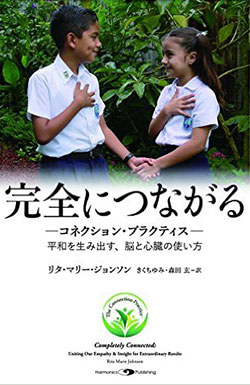
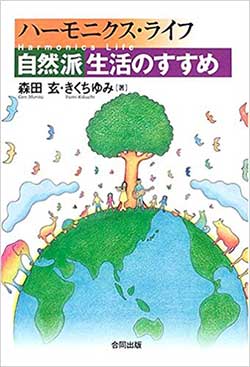
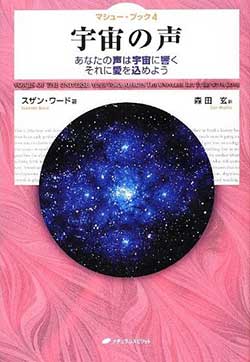

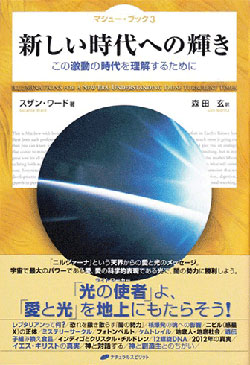




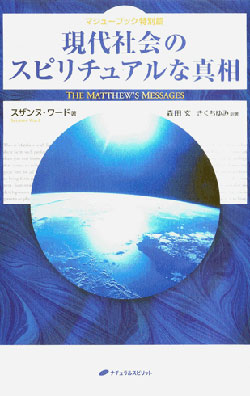

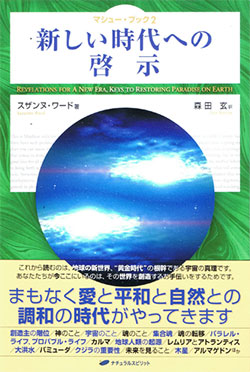
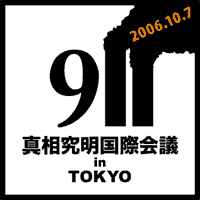



0 件のコメント:
コメントを投稿